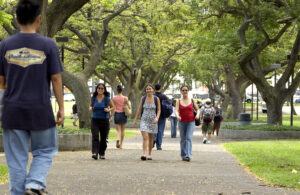Mainland Chinese are travelling abroad in huge numbers. Twenty years ago, fewer than 4 million Chinese traveled abroad each year. Most of these were traveling for business, official travel, or education. They were not allowed to go abroad just for fun. Not any more. Bolstered by exploding numbers of leisure travelers, China now boasts 70 million outbound travelers, 3.5 times greater than Japan. By 2015, the number is expected to grow to 100 million, making China the planet’s largest outbound tourism market. Not surprisingly, just about every tourist destination around the world is eagerly vying for Chinese visitors, all hoping to reap a share of their freewheeling spending.
China’s 70 million tourists were not unleashed overnight. Unlike Japan and South Korea, which relaxed their prohibition on leisure travel in a single stroke, China followed a selective and incremental process of travel liberalization. At first, organized tours to visit family were allowed from Guangdong to Hong Kong and Macau. After 1990 China allowed leisure travel to a few countries in South East Asia, marking the beginning of its Approved Destination Status (ADS) policy: negotiating agreements with selected countries that allow government approved Chinese travel agencies to apply for visas for all members of tightly controlled, prepaid tours. By reducing the cost of obtaining a visa, providing convenient package tours, and legitimizing foreign pleasure travel, ADS agreements—in tandem with extraordinary economic growth—paved the way for large increases in overseas Chinese travel.
The accompanying figure illustrates the phenomenal growth of Chinese outbound tourism. When ADS first began, China had fewer than 5 million outbound tourists. By 2010, China had 110 ADS agreements, and overseas tourists numbered over 57 million. Sumner La Croix, James Mak, and I recently estimated that among the countries that were early recipients of ADS designation, ADS approval increased average annual Chinese visitor arrivals growth by 10.5-15.7 percentage points during the subsequent three-year period.
[Missing Interactive Figure Goes Here]
China’s outbound market is much more liberalized than it was 20 years ago. Nevertheless, restrictions on Chinese tourists remain. Research shows that Chinese residents consider the U.S. one of their most desirable tourist destinations. Yet, it hasn’t been easy for Chinese to visit America, despite the fact that the U.S. and China signed a de facto ADS agreement at the end of 2007. The fault, in this case, lies with the U.S. Under the agreement between the two countries, potential Chinese tourists to the U.S. are not allowed to apply for U.S. visas in bulk and must endure costly visa application procedures, including personal interviews. This has become a sore point with Hawaii tourism officials, where despite the growth of China’s outbound tourism market, it still accounts for fewer than 2% of total Hawaii visitor arrivals, and there is only a single airline providing direct service to the Islands.
It is getting better. President Obama’s recent executive order to ease U.S. visa policies and to increase the visa-processing capacity will lead to further easing of travel for Chinese tourists to the U.S. For now, however, the U.S. is losing out to Europe, Australia, and Asia, destinations more open to Chinese travelers. In the meantime, Hawaii should work toward becoming a more Mandarin friendly destination and to develop more Chinese oriented tourism services. The Chinese tourist boom may well be coming, and Hawaii had better be ready.
– Shawn Arita





